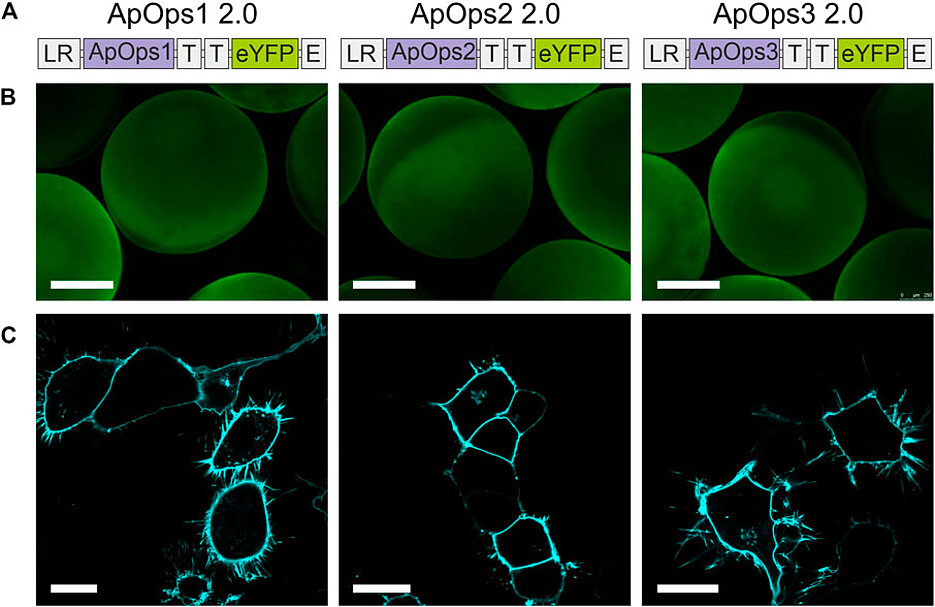Modified rhodopsins from Aureobasidium pullulans excel with very high proton- transport rates
11/01/2021Modified rhodopsins from Aureobasidium pullulans excel with very high proton-transport rates
Sabine Panzer, Chong Zhang, Tilen Konte, Celine Bräuer, Anne Diemar, Parathy Yogendran, Jing Yu-Strzelczyk, Georg Nagel, Shiqiang Gao, Ulrich Terpitz
Front Mol Biosci 2021;8:750528
Aureobasidium pullulans is a black fungus that can adapt to various stressful conditions like hypersaline, acidic, and alkaline environments. The genome of A. pullulans exhibits three genes coding for putative opsins ApOps1, ApOps2, and ApOps3. We heterologously expressed these genes in mammalian cells and Xenopus oocytes. Localization in the plasma membrane was greatly improved by introducing additional membrane trafficking signals at the N-terminus and the C-terminus. In patch-clamp and two-electrode-voltage clamp experiments, all three proteins showed proton pump activity with maximal activity in green light. Among them, ApOps2 exhibited the most pronounced proton pump activity with current amplitudes occasionally extending 10 pA/pF at 0 mV. Proton pump activity was further supported in the presence of extracellular weak organic acids. Furthermore, we used site-directed mutagenesis to reshape protein functions and thereby implemented light-gated proton channels. We discuss the difference to other well-known proton pumps and the potential of these rhodopsins for optogenetic applications.






